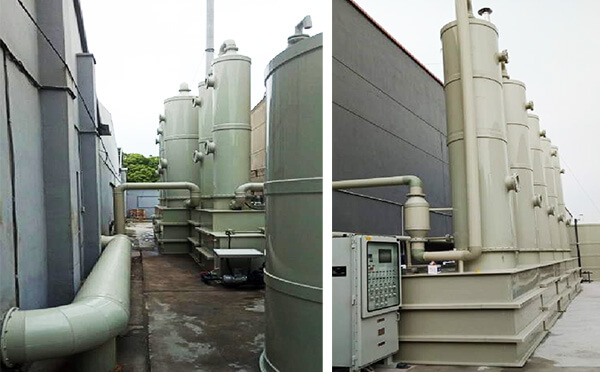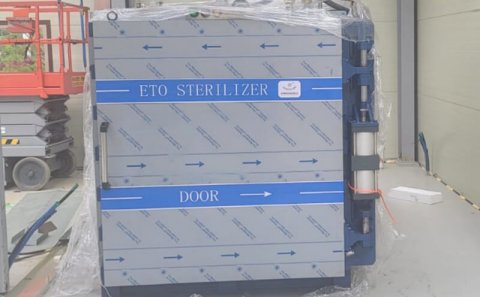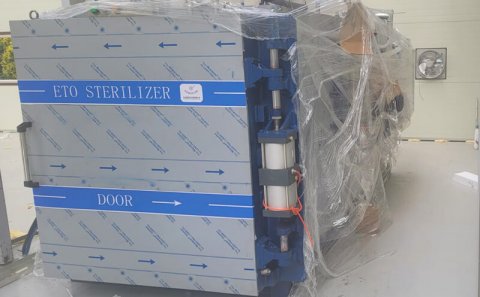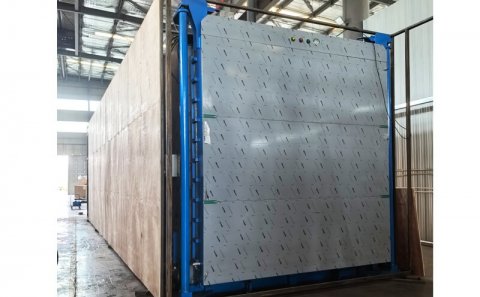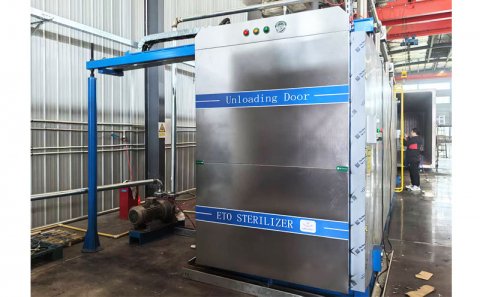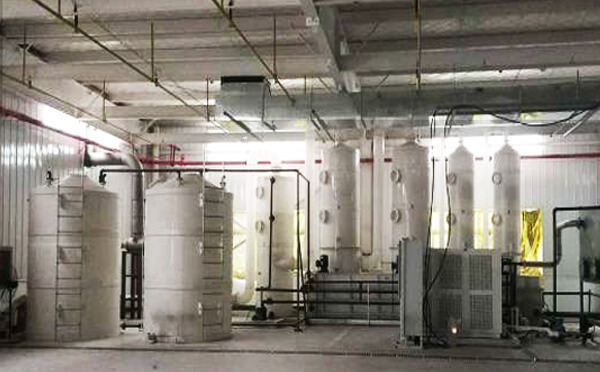 EO tail gas treatment equipment of ethylene oxide sterilizer
EO tail gas treatment equipment of ethylene oxide sterilizer
1. Design scope of ethylene oxide tail gas treatment
Design scope of tail gas: from the outlet of steam water separator (the pipe between vacuum pump and steam water separator is in the charge of the demander's household), until the exhaust port after treatment (the chimney is in the charge of the demander). It mainly includes relevant process design, pipeline engineering design, equipment manufacturing, installation, electrical engineering and system commissioning, etc. The specific design contents are as follows:
Overall planning of tail gas treatment;
Selection of tail gas treatment process and confirmation of technical parameters;
Selection of tail gas treatment equipment;
Calculation and design of tail gas treatment equipment, including main equipment and necessary auxiliary facilities;
Design of pipeline, ventilation, purification, electrical and automatic control of tail gas treatment system;
2. Design conditions
1) The volume of sterilizer is 60m3, two batches are produced every day (24 hours, the same below), intermittent production;
2) Dosage: the concentration in the cabinet is 750g / m3;
3) Replacement process: 4-6 times of replacement, evacuation to - 80kPa (15-20min), air intake to - 5kpa (10-15min),
4) According to the above analysis
The process of sterilization is intermittent air intake and exhaust, the time of air intake and exhaust is regular, and the concentration of exhaust shows a step-by-step downward trend;
The required tail gas treatment equipment can handle the peak high concentration, and can also meet the requirements of start and stop.
5) Emission index: VOCs ≤ 40mg / m3.
3. Treatment process
Process introduction
In this process, ethylene oxide and water can react to form glycol, diethylene glycol, triethylene glycol, few polyglycols and trace polyester alcohol under the action of acid catalysis. At the same time, ethylene oxide and water can be mutually soluble in any proportion. The tail gas of ethylene oxide is treated by reaction absorption tower.
The key technology of the whole reaction is: how to improve the reaction rate,
Quickly reduce the concentration of EO in aqueous solution. Based on this, the technical scheme improves the reaction rate of ethylene oxide by the following means to ensure the absorption efficiency: (1) adding homogeneous catalyst to improve the reaction rate; (2) dividing the reactor of reaction absorption tower into four independent units to form gradient reaction absorption.
The glycol fusel solution produced in the process of tail gas treatment can be sold for the second time. At the same time, there is no generation and discharge of secondary pollutants in tail gas treatment. The tail gas treatment system is safe and stable, which adapts to the tail gas treatment condition of sterilizer.
4. Process description
(1) Water quantity and flow rate: the flow rate of the spray pump and the flow rate of the centrifugal fan are determined according to the exhaust volume of the vacuum pump;
(2) Acid absorption reaction medium: 1-2% sulfuric acid solution;
(3) Temperature and pressure: Although the reaction is exothermic, the increase of temperature and pressure is limited. The reaction is between normal temperature and 50 ℃, and the pressure is between micro negative pressure and normal pressure;
(4) Waste liquid generation: ethylene oxide reacts with water in the reactor kettle to generate fusel solution mainly composed of ethylene glycol. After the reaction, the overall volume of the solution will increase, and the concentration of ethylene glycol in each tower kettle will increase, with the fastest increase in 1 × tower kettle. When the discharge concentration is close to the upper limit, the waste liquid will be transferred to the rich liquid tank through the rich liquid pump, and then the solution in 2 × tower kettle will be led to 1 × tower kettle, and so on ;
(5) Fresh liquid supplement: after the transfer of 4 × tower, prepare fresh reaction liquid in 5 × tower kettle, and supplement a small amount of fresh liquid to 1 × tower-3 × tower kettle;
(6) Neutralization of discharged solution: environmental protection designated qualified hazardous chemical waste liquid treatment plant (quintuplicate sheet) for recycling treatment.
Jul 04, 2022
view: 1391
Presumably, people all know that there are a lot of germs in todays environment. Officially, because of this, the sterilizer industry is expanding from time to time. There are many kinds of sterilizers, including ethylene oxide sterilizers....
Read More
Jun 26, 2025
view: 1380
Sterilization procedure 1.The sterilization procedure of ethylene oxide shall include preheating, pre wetting, vacuuming, entering the gasified ethylene oxide to reach the predetermined concentration, maintaining the sterilization time, rem...
Read More


